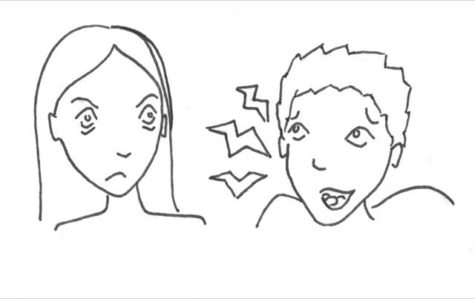A lesser-known hearing disorder abuzz
For misophonics like myself, meals are as much about sound as they are about taste. Each night, when I sit down at the dinner table, I prepare myself for an unrelenting symphony of slurping, smacking, and crunching. Even the subtlest of sounds seem amplified, inhabiting a space deep within my ear canal. While one might associate hearing disorders with loss of function, misophonia is quite the opposite.
Dr. Steven W. Cheung, an otologist, ear specialist and skull base surgeon in the Department of Otolaryngology at the University of California, San Francisco, describes misophonia as a “disorder of decreased sound tolerance,” in which everyday sounds trigger an extreme emotional response. Related disorders include hyperacusis, which is characterized by decreased tolerance for loud sounds, and phonophobia, a rare symptom of hyperacusis that may evoke an overall fear of sounds. According to Dr. Cheung, misophonia differs from related disorders in its “association with anxiety and obsessive compulsive disorders, and lack of association with sound loudness.”
Individuals affected by misophonia may experience anxiety, distress or anger in response to certain trigger sounds, most commonly human-produced sounds such as eating, drinking and breathing, according to a report published on February 2, 2017 in the journal “Current Biology.”
At this stage, it is unclear how common the disease is. However, in a survey sent to Urban students and faculty last month, over 80 percent of the 48 responses indicated experiencing some degree of sound sensitivity.
Urban Librarian Sarah Levin says her sensitivity to sound has intensified over time. “It affects primarily my relationship with my husband,” she said. “I’ll be sitting in a room doing something quietly and he’ll come in and be eating something or chewing something and it’s so maddening to me when I hear it … It’s gotten to the point where I just look at him and he knows the egregious error that he’s made and he leaves the room.”
Lydia Sears (‘18) experiences similar symptoms. “The thing that irks me the most is when people chew … food noises are the worst and repetitive noises of that sort. I get very anxious and really built up with energy,” Sears said.
The recent “Current Biology” report details misophonia’s neurological connection, presenting MRI data from a study of 20 individuals with misophonia and 22 control subjects. Misophonic subjects “showed more activity in their anterior insular cortex (AIC),” as well as “abnormal functional connectivity between AIC and a network of regions responsible for the processing and regulation of emotions, including ventromedial prefrontal cortex (vmPFC), posteromedial cortex (PMC), hippocampus, and amygdala.” This is the first time scientists have demonstrated evidence of structural and functional differences in the brains of sufferers.
Misophonic subjects often exhibit a heightened heart rate as well a galvanic skin response, which is a measure of emotional arousal based on sweat secretion. This manifestation of the disorder resembles the fight-or-flight response, which suggests, according to a 2015 case report written by George Bruxner and published by The Royal Australian and New Zealand College of Psychiatrists, a correlation between misophonia and general environmental sensitivity.
“There is unresolved debate on whether misophonia is primarily an auditory disorder with abnormal limbic (emotional) reactions or primarily a psychiatric (anxiety, obsessive compulsive) disorder expressed in the presence of a particular sound trigger,” Dr. Cheung said in an interview with The Urban Legend.
Although research is limited, a number of case studies support the theory that misophonia is a neurologically-based disorder of psychiatric relevance. In a study conducted by researchers from the University of South Florida in 2014, 20 percent of the 483 participating students were misophonics, showing symptoms similar to those of psychiatric conditions including anxiety, depression, and OCD.
Bruxner’s report states, “The purest form of misophonia can occur without activation of the auditory apparatus.” Instead, the misophonic response is highly dependent upon one’s associations with a particular sound based on previous encounters as well as the context in which that sound is presented.
The “Current Biology” report states that it cannot yet be determined “whether misophonia is a cause or consequence of atypical interoception,” which is the awareness of internal body states.
One of the greatest challenges in targeting misophonia is the lack of a concrete diagnostic tool and the resulting dependency on self-reporting. In a 2013 article published in a journal of the Public Library of Science (PLOS), the authors propose a set of diagnostic criteria. One notable indicator of misophonia mentioned in the article is the recognition that one’s response to a human-produced sound is “out of proportion.” In an interview with The Urban Legend, Levin acknowledged, “I know that it’s an inappropriate response to be that angry, but I can’t deny the feeling.”
Moving forward, Dr. Cheung hopes to see more interdisciplinary research and collaboration between otologists and psychoanalysts in order to facilitate developments surrounding this under-recognized disorder.


